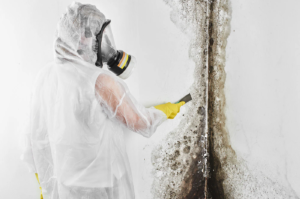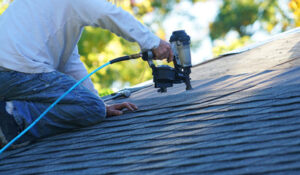Retaining Walls Charleston SC are an excellent way to help stabilize property and provide usable land. They also create level surfaces for landscaping and other outdoor activities.
Gravity retaining walls use their weight to resist lateral soil pressure. They must consider bearing, sliding and overturning pressure and can be built up to 33 feet tall.

Erosion can destroy landscape, damage foundations and undermine homes. Adding a retaining wall to your property is an effective way to prevent erosion. It reduces the angle of sloped terrain, holding back soil and providing support for plant life, preventing landslides and other serious hazards.
In addition, retaining walls can create flat surfaces on steep slopes and improve landscaping design. They can also serve as a barrier to erosion and help manage the flow of water across the land. With a properly designed and built retaining wall, you can add usable space for gardening, seating areas and other outdoor activities.
Retaining walls can be constructed with a wide variety of materials, including natural stone, wood and concrete block. Each material has its own advantages and benefits. Concrete blocks, for example, are extremely durable and require minimal maintenance. They are ideal for construction of larger walls, and you can mix in different textures to add visual appeal. If you’re planning a large project, you should hire a professional to build your retaining wall. They will ensure the structure is sturdy and will withstand heavy loads, such as vehicles or building structures.
Soil erosion is a common problem on many residential properties. Heavy rains can cause erosion by washing away soil, resulting in the formation of gullies and small ravines. The erosion can even erode the bedrock, causing sinkholes in regions with limestone bedrock. If you’re located in a region prone to seismic activity, a retaining wall is an important investment that will protect your home from soil erosion.
When a retaining wall fails, it can become unstable and pose a risk to your home’s foundation. Signs of a failing retaining wall include hairline cracks that appear vertical and stretches across the wall, bulging at the bottom or sides and settlement of the soil behind the retaining wall. If you notice any of these signs, contact a professional immediately to inspect and repair the wall.
Proper maintenance of a retaining wall is essential to avoiding erosion. The best way to maintain a retaining wall is to use a well-draining backfill. A granular backfill material such as crushed stone or gravel will allow water to drain quickly, preventing excess moisture and reducing hydrostatic pressure on the wall and soil. Weep holes and drainage solutions can also be incorporated into the wall to ensure proper water management.
They Help Contain Flood Waters
Retaining walls help hold a wedge of soil on sloped terrain to prevent flooding during rain storms or retaining ground water in low areas of the property. They can also be used to level out areas for gardening, landscaping or construction. The design of a retaining wall depends on the terrain of the yard and the specific project in mind, but they can be constructed with materials like concrete blocks, poured concrete, treated timbers, rock or boulders. The best material for the job should factor in the slope of the land, how heavy a wedge of earth will be supported by the wall and what kind of drainage is needed.
In areas prone to sinkholes, retaining walls can be built with anchored structures that use cables or other stays driven into the wall and then expanded in place. These are more complex than retaining walls that just rely on the force of gravity, but they are extremely effective at resisting pressure from a sinkhole if built correctly.
The design of a retaining wall is also crucial to its longevity. A good contractor will take into account the amount of water the wall needs to retain, the strength of the currents and the salt content of nearby bodies of water. The walls are then built using the most durable materials possible based on these factors.
When a retaining wall begins to fail, you will see signs of trouble such as bulging, sagging or cracks. Hairline cracks are normal, but if you can put your finger in the crack and stretch it across the entire length of the wall, that could indicate structural damage. A reputable landscaper will have the technology to monitor these signs and can even create 3D models of complicated layouts with GPS equipment.
Retaining walls help manage drainage, directing water away from the home and toward a proper drainage system. This prevents erosion, helps keep plants and grass healthy, keeps the foundation of the home safe and avoids costly damage to underground utilities. It also prevents soil and debris from being deposited around the house and foundation, which can cause significant problems in the future and lead to expensive repairs.
They Increase Property Value
Whether they’re made from brick, natural stone, or concrete, retaining walls are a valuable addition to any landscape. They add curb appeal, prevent soil erosion, reduce property damage and more. Properly installed retaining walls also require minimal maintenance, saving you money in the long run.
Slope management is one of the biggest challenges in landscaping, and it’s difficult to work on uneven or sloped land without the help of retaining walls. They’re essential to stop soil erosion, manage water flow and create usable areas on steep terrain.
Retaining walls are built to withstand earth and fluid pressure, so they’re able to hold back large amounts of materials. They can be designed in various sizes and styles to fit the needs of your property, including a design that complements your home’s architecture and overall aesthetic.
Many people worry about their home’s foundation when they live on an incline, but retaining walls can protect the integrity of your home and prevent soil instability. They can also reduce the amount of water that pools around your house, which helps prevent moisture-related damage.
In addition, retaining walls are an excellent way to increase the value of your home. They’re an attractive and functional feature that can transform unusable space into a garden, seating area, or even an outdoor kitchen. They can also be used to create terraced lawns or tiered gardens.
While the benefits of retaining walls are numerous, they’re important to consider carefully before you have them constructed. Make sure to work with a professional who can plan, design and construct the wall so that it meets all of your expectations and lasts for decades to come.
Choosing the right material for your retaining wall can significantly affect its cost and function. For example, a brick wall requires extensive time and skill to build, but it’s durable and will add character to your landscaping. Another popular choice is concrete, which is affordable and can be designed in a variety of ways to complement your landscape. Regardless of the material you choose, it’s important to have your retaining wall inspected and maintained regularly by a qualified professional to ensure that it remains structurally sound and safe.
They Reduce Maintenance
A retaining wall doesn’t just prevent soil erosion, it can also transform a sloped landscape into usable space for patios, gardens, driveways, and other structures. In addition, retaining walls can increase the value of your property and improve the aesthetics of your landscaping, making them an excellent investment.
One of the most important factors in a retaining wall’s longevity is proper drainage. Without a well-designed system, water can build up behind the wall, increasing pressure and destabilizing the soil. This can lead to leaning, cracking, and other problems. A reputable retaining wall contractor will make sure that drainage is taken care of before the construction process begins. They will install a drainage system that includes pipes, gravel backfill, and weep holes. They will also make sure that the soil is graded properly to direct water away from the wall.
Choosing the right building materials is also essential. Using concrete blocks, stone, brick, or other durable options is the best choice to ensure that your retaining wall will last for years. When compared to wood, these types of walls are more cost-effective, and they can be designed with different shapes, styles, and colors to complement your landscaping design.
Another way to protect your retaining wall is to choose plants and shrubs that won’t interfere with its structure. While greenery is a great addition to any landscape, large or deep-rooted plants can damage retaining walls by pushing rocks or blocks out of place. Make sure to trim any vegetation that’s too close to your retaining wall.
Regular maintenance is the best way to keep your retaining wall looking good and functioning properly. This includes inspecting the wall regularly, particularly after storms or heavy rains. If you notice any signs of damage, such as a sagging or cracking, contact a professional immediately.
While retaining walls offer many benefits, they can be vulnerable to erosion and other problems. Regular inspections, correct installation, and a proper maintenance plan can help reduce the risk of damage or failure, saving you money in the long run. By choosing the right building materials, managing drainage solutions, and incorporating plant selection, you can extend the life of your retaining wall.








